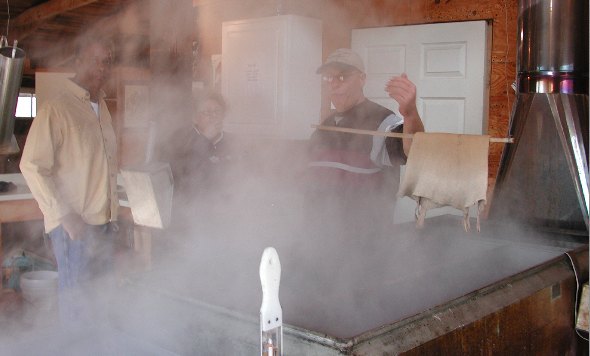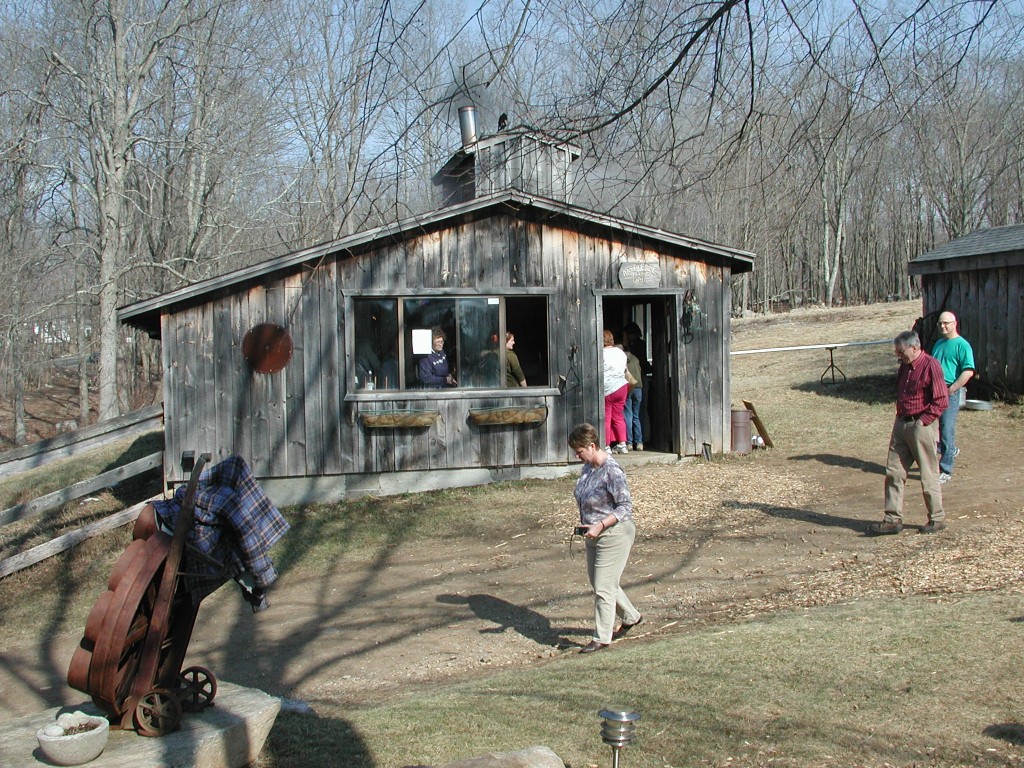
The earth knows that winter is on the wane. Sunny days and cold nights are prime time for sugaring – sap is flowing and around the region, trees are tapped for sweet rewards.

A family favorite event is the Hebron Maple Festival, set for Saturday, March 20 and Sunday, March 21 this year. Food, demonstrations, a quilt show, plus open house at the area sugarhouses. (And if you stop at Pierce’s Sugar House, they may have their chickens or a pony out for children to pet and enjoy. It’s only open during the festival.)
Syrup takes work and time. Maple tree sap as a sweetener was enjoyed by Algonquins and other tribes long before Europeans arrived on the North America continent.
Stone tools were used to incise trees with reeds or curved bark used to let the clear liquid drip.
The life force of a tree is rich in nutrients as well as being just plain sweet and delicious.
It still takes approximately 30 to 40 gallons of sap to make one gallon of syrup. (Think of that many containers of milk to get one drinkable gallon.)
Gary Durant of Fabyan Sugar Shack located in Thompson offers pure maple syrup in all sizes, plus maple granulated sugar, peanut brittle, maple butter, maple jelly and other maple-y delicious products.
The sugar maple and black maple are the most common trees for production and they must be 30 to 40 years old (and more than 10 inches in diameter), according to Connecticut Department of Agriculture.
As a rule of thumb, a tree can give as much as a gallon of sap for each tap it has per day.
Canada makes more than 80 percent of the world’s maple syrup, producing about 26.5 million liters in 2005.

For listings of more tidbits and links for Connecticut see www.ctmaple.org. For a listing of maple sugar producers and where to see the sugaring operations or buy products see www.ct.gov.
The 2010 Guide to Connecticut Maple Sugar Houses brochure is available online as a PDF.
The North American Maple Syrup Council (NAMSC) promotes industry education and supports maple research through the NAMSC Research Fund. The non-profit organization was established in 1959 and brings together industry leaders and affiliated groups to share common interests, experience and knowledge.


